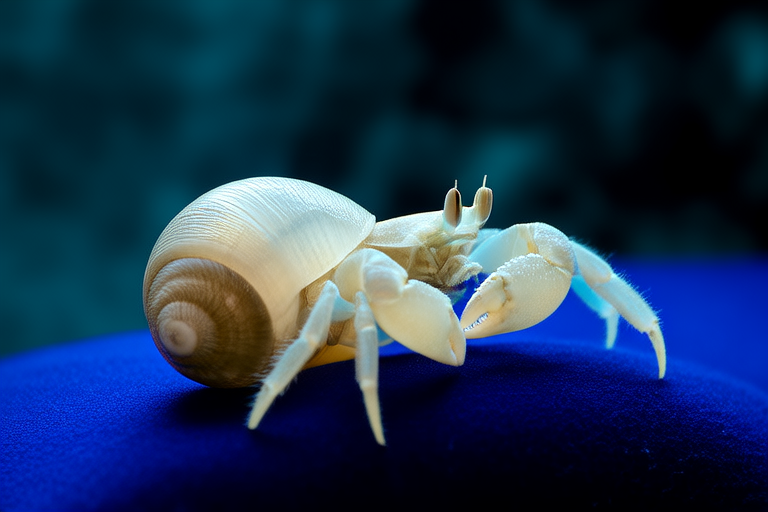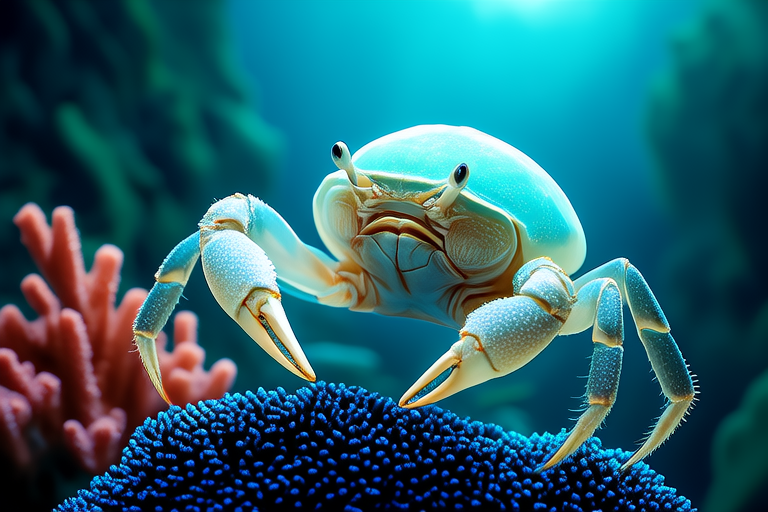From Sea to Table: Discovering the Unique Pea Crab
The ocean, vast and mysterious, houses a myriad of creatures, each playing a vital role in maintaining the delicate balance of marine ecosystems. Among these, the pea crab stands out as a fascinating example of nature’s ingenuity. This diminutive crustacean, named for its resemblance to a pea, is not only a marvel of evolution but also a key player in the intricate web of marine life. In this article, we explore the world of the pea crab, from its habitat and symbiotic relationships to its unique adaptations and significance in marine conservation.
A Tiny Marvel: The Size and Habitat of Pea Crabs
Pea crabs (Pinnotheridae) are some of the smallest true crabs in the world, typically measuring less than half an inch in length. Their petite stature belies their importance in marine ecosystems. These crabs are found in coastal waters around the globe, thriving in environments that range from shallow bays to deep-sea habitats. They are particularly prevalent in areas rich with mollusks, which serve as both shelter and sustenance for the pea crab.
Their preferred habitat includes the gills and mantle cavities of various mollusks, where they find protection and food. Some common hosts include oysters, clams, and mussels. The intimate relationship between the pea crab and its host is a prime example of symbiosis, a phenomenon where two different species live together, often benefiting one another.
Symbiosis: A Tale of Two Species
The relationship between the pea crab and its host mollusk is a classic case of mutualism, a type of symbiosis where both species benefit. For the pea crab, the mollusk provides a safe haven from predators and a steady supply of nutrients. By residing within the host’s body, the pea crab gains access to a continuous stream of plankton and detritus filtered by the mollusk. In return, the pea crab assists the mollusk by feeding on parasites and other organisms that might otherwise harm its host. This interaction underscores the interconnectedness of marine life and highlights the pea crab’s pivotal role in maintaining the health of its ecosystem.
The Role of Pea Crabs in Marine Ecosystems
Despite their small size, pea crabs play a crucial role in marine ecosystems. Their symbiotic relationships contribute to the overall health and stability of their hosts, which in turn supports the broader marine community. By controlling parasite populations and improving the efficiency of nutrient transfer within the host, pea crabs help maintain the balance of marine life.
Additionally, the presence of pea crabs can serve as an indicator of the overall health of the marine environment. If pea crabs are thriving, it suggests that their hosts are healthy, and consequently, the surrounding ecosystem is likely in good condition. This makes them valuable bioindicators, helping scientists assess the well-being of marine habitats.
Adaptations for Survival
The pea crab’s survival is testament to its remarkable adaptations. One of the most notable is its ability to coexist with its host without causing undue stress. Pea crabs have evolved to be small enough to fit comfortably within the confines of their host’s body while still being large enough to feed effectively. Their claws are adapted for gripping onto the host’s internal structures, ensuring they remain securely in place.
Another adaptation is their reproductive strategy. Pea crabs reproduce internally, with females carrying fertilized eggs beneath their bodies until they hatch. This method protects developing offspring from external threats, increasing their chances of survival. Once hatched, the larvae are released into the water column, where they drift until finding a suitable host to continue their life cycle.
The Journey from Ocean Floor to Table
In some parts of the world, pea crabs are considered a delicacy and are harvested for consumption. However, their small size and reliance on their hosts make them challenging to collect in large quantities. As a result, they are rarely commercially exploited and are more commonly found in traditional or artisanal fisheries.
The process of harvesting pea crabs involves carefully opening the shells of their mollusk hosts and extracting the crabs. Due to their tiny size, this requires patience and precision. Once collected, they are typically boiled or steamed, resulting in a delicate, sweet flavor that some seafood enthusiasts find appealing.
Lifecycle and Environmental Interactions
The lifecycle of the pea crab is a testament to the complexity of marine ecosystems. From the moment a female pea crab releases her larvae into the water, they begin a perilous journey to find a suitable host. The larvae float freely in the water column, relying on currents and tides to transport them to potential hosts. Once a larva locates a compatible host, it enters through the host’s gills or mantle cavity, marking the beginning of its symbiotic relationship.
Throughout their lives, pea crabs interact with various species within their environment. They not only rely on their hosts for protection and food but also influence the behavior and health of their hosts. By feeding on parasites and debris, they contribute to the overall cleanliness and vitality of their hosts, indirectly benefiting other organisms that depend on these mollusks.
Biodiversity and Conservation
The pea crab’s contribution to biodiversity cannot be overstated. As part of a complex network of interdependent species, they play a critical role in maintaining the balance of marine ecosystems. Understanding the life cycles and behaviors of such creatures is essential for effective marine conservation efforts. By studying pea crabs and their interactions with other species, researchers can gain valuable insights into the health and resilience of marine environments.
Conservation efforts aimed at protecting pea crabs and their habitats are crucial for preserving the integrity of marine ecosystems. Protecting the mollusks that serve as hosts for pea crabs ensures the survival of these tiny crabs, contributing to the overall biodiversity of the ocean.
The Importance of Small Creatures
The pea crab may seem insignificant when compared to larger marine animals, but its impact on marine ecosystems is profound. Its symbiotic relationships, unique adaptations, and role in biodiversity underscore the importance of understanding even the smallest members of the marine community. By learning more about the pea crab and similar organisms, we can better appreciate the complexity of marine life and develop strategies to protect these vital ecosystems.
Understanding the pea crab also highlights the interconnectedness of all living things. Every creature, no matter how small, plays a part in the grand tapestry of life. As we strive to conserve our oceans, it is essential to recognize the value of every species, including the pea crab, in maintaining the health and beauty of our planet’s marine environments.

